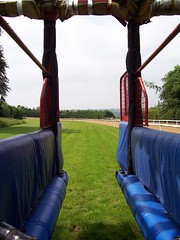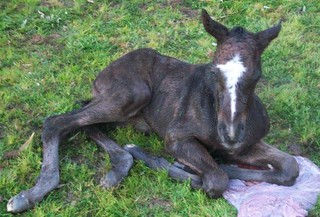It feels like forever since I’ve done a book review! Or maybe it’s just that I feel I’ve not done a lot of reading of late.

Well I’m excited to say that this review is of the first ebook ever that I’ve read – I know, about time! Author Price McNaughton was kind enough to gift me a copy of her book after she was profiled on Equus Blog.
Murder is Ugly is a fictional piece based around young woman Jinx Delany who has been unexpectedly invited to stay with a friend for the summer. Jinx accepts and moves her horse to be boarded nearby before being introduced to the community where her friend Brynn lives.
Jinx is initially in awe of a beautiful set of houses that seem as immaculate as the people that inhabit them. However, as Jinx spends time with Brynn’s family and neighbours, she realises that a lot of the ‘perfection’ is a façade and evil lives under the surface. A neighbour is found dead, but the death can be explained through a health condition.
It’s only as another body is found that Jinx starts to question if the first was through natural causes, or caused by someone.
Amongst the mess that she has suddenly found herself in, Jinx is questioning what she wants in life and what she wants to do with herself. Plagued with uncertainty, she finds her time focused on trying to work out the members that make up the neighbours in Brynn’s community.
Murder is Ugly is first and foremost a murder mystery. Secondly, it is written by a horse lover who has included this gorgeous animal in the story. I feel that horses could feature more in this novel to make it a ‘horse story’ but Murder is Ugly isn’t put forward as a horse story and it does cover the mystery category well!
An interesting read and one that had me not wanting to be alone at night when reading it! 😉
Author: Price McNaughton
http://www.talebearers.com/
Fiction – murder mystery
In my library? Yup – my first ebook! A very entertaining read.
Want it? Get it now on Amazon.
“If you don’t have anything nice to say, don’t say anything at all.”


